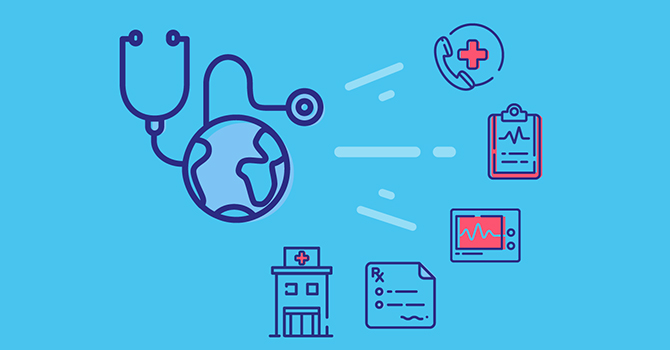Healthcare RCM Providers for Reliable Earnings Cycle Management
Healthcare RCM Providers for Reliable Earnings Cycle Management
Blog Article
A Comprehensive Guide on How Healthcare RCM Functions to Simplify Invoicing and Collections
Navigating the intricacies of health care revenue cycle monitoring (RCM) is crucial for service providers intending to improve their billing and collections procedures. The guide unboxes the complexities of RCM, from patient enrollment to accounts receivable administration, offering understandings into maximizing each action. Integrating sophisticated technology and standardized treatments can substantially minimize claim denials and increase payment cycles. Yet, real obstacle depends on seamlessly merging these aspects to improve capital. As we discover the core components and approaches that drive efficiency, one concern remains: exactly how can medical care entities best setting themselves to grow financially in an ever-evolving market?
Comprehending Earnings Cycle Management
Understanding the ins and outs of Revenue Cycle Monitoring (RCM) is essential for health care companies aiming to maximize their monetary efficiency. RCM is a crucial administrative function that encompasses the entire financial process of client care, from the initial appointment setting to the last settlement of the equilibrium. It is an intricate treatment made to recognize, accumulate, and take care of the earnings from the solutions given to people. Reliable RCM makes certain that medical care service providers get prompt and precise repayments, lessening the danger of revenue loss and improving cash circulation.
The RCM process begins when a person routines an appointment and expands with the patient's treatment trip, including payment and collections. A crucial objective is to minimize the time between supplying a service and obtaining repayment, thus boosting the organization's economic health. RCM includes various functions such as person registration, insurance confirmation, charge capture, coding, declares entry, payment posting, and taking care of rejections and charms.
Key Parts of RCM
In the realm of Profits Cycle Management (RCM), comprehending its essential parts is fundamental to accomplishing economic efficiency within health care companies. RCM is an extensive procedure that encompasses various phases, each critical to making certain effective invoicing and collections. The main parts consist of client registration, insurance policy verification, charge capture, coding, insurance claim entry, settlement uploading, and accounts receivable management.

As soon as coded, claims are submitted to payers, where accuracy is critical to prevent hold-ups or beings rejected - Healthcare RCM. Settlement uploading entails recording the received payments, which allows for the reconciliation of accounts. Lastly, accounts receivable management concentrates on tracking and addressing unpaid claims, ensuring timely follow-up and resolution
Each element of RCM is adjoined, and inadequacies in any type of part can interfere with the entire cycle. Consequently, mastering these components is important for doctor to optimize revenue and boost their economic health and wellness.
Methods for Effective Billing

Systematizing payment treatments across the organization is another key approach. Developing clear guidelines for documentation, coding, and submission aids keep consistency and conformity with governing demands. Training team routinely on these procedures ensures every person is updated with the current changes in payment codes and payer policies.
Exact fee capture is important in preventing earnings leakage. Implementing routine audits and monitoring systems enables the identification and correction of inconsistencies before they impact revenue. In addition, maintaining open lines of interaction with payers aids to rapidly fix any type of conflicts or misunderstandings that may emerge.

Finally, interesting people early in the payment process by offering clear quotes and academic materials regarding their economic responsibilities can dramatically reduce complication and improve repayment timeliness. These techniques jointly contribute to a much more financially healthy and balanced and efficient payment system.
Enhancing Collections Procedures
A robust collections procedure is crucial for maintaining economic security within medical care companies. Provided the intricacies of clinical billing and the variety of payer demands, boosting the collections process entails implementing strategic measures that guarantee accurate and prompt repayment of solutions provided. Central to this is the usage of modern technology to automate and improve procedures, enhancing and reducing hands-on errors performance. Automation tools can assist in tracking case statuses, sending timely pointers to clients, and handling rejections a lot more effectively.
Educating team to understand the subtleties of insurance coverage policies and payment codes is equally vital. This expertise empowers them to attend to payment inconsistencies quickly and connect efficiently with patients concerning their monetary obligations. Furthermore, transparent and clear person communications are crucial. Providing detailed descriptions of costs and offering versatile repayment strategies can enhance individual satisfaction and punctual payments.
Routine audits of the collections procedure need to be performed to determine areas for enhancement and ensure conformity with guidelines. By evaluating information, medical care companies can identify patterns, expect potential problems, and adjust techniques as necessary (Healthcare RCM). Inevitably, a well-enhanced find this collections process not just sustains financial health and wellness however also adds to a much more seamless experience for individuals and team alike
Optimizing Earnings Streams
Building upon the structure of a solid collections procedure, health care organizations can further boost their economic security by tactically maximizing profits streams. This entails a multi-faceted approach, beginning with a thorough evaluation of existing income sources to identify inadequacies and areas for development. Using innovative information analytics devices enables companies to obtain understandings into payer mix, individual demographics, and service application patterns, enabling data-driven choices that enhance revenue capture.
Executing automated payment systems can dramatically lower errors and quicken insurance claims refining, guaranteeing that profits is collected more successfully. Additionally, enhancing payer agreements with Your Domain Name routine settlements can enhance compensation prices and terms, straight influencing the bottom line. Diversifying service offerings, such as integrating telehealth or health care, can also draw in a wider client base, hence boosting earnings possibility.
Another important element is boosting patient engagement and contentment, as completely satisfied individuals are more likely to stick to treatment plans and make timely payments. Using versatile payment options and clear billing methods can boost collections and foster person loyalty. Healthcare RCM. By embracing these methods, healthcare companies can create a much more resilient monetary framework, guaranteeing sustained development and security in an ever-changing market landscape
Conclusion
Finally, healthcare Profits Cycle Monitoring (RCM) plays a crucial function in enhancing invoicing and collections procedures by integrating crucial components such as person registration, insurance verification, cost capture, coding, asserts submission, and balance due monitoring. By using innovative modern technology, systematizing treatments, and cultivating person involvement, health care companies can substantially lower claim rejections, increase payment cycles, and enhance next money circulation. This comprehensive strategy to RCM ultimately results in enhanced monetary performance and sustainability for healthcare organizations.
The RCM process starts when a patient timetables an appointment and extends with the patient's care journey, including invoicing and collections.An additional critical component is improving individual interaction and satisfaction, as satisfied clients are much more likely to adhere to treatment strategies and make prompt payments. Offering adaptable repayment options and clear payment methods can boost collections and foster individual commitment.In conclusion, health care Profits Cycle Management (RCM) plays a crucial function in enhancing billing and collections processes by integrating key parts such as patient enrollment, insurance policy confirmation, fee capture, coding, declares submission, and accounts receivable management. By using innovative modern technology, standardizing treatments, and promoting person engagement, medical care companies can considerably minimize insurance claim denials, increase settlement cycles, and improve cash circulation.
Report this page